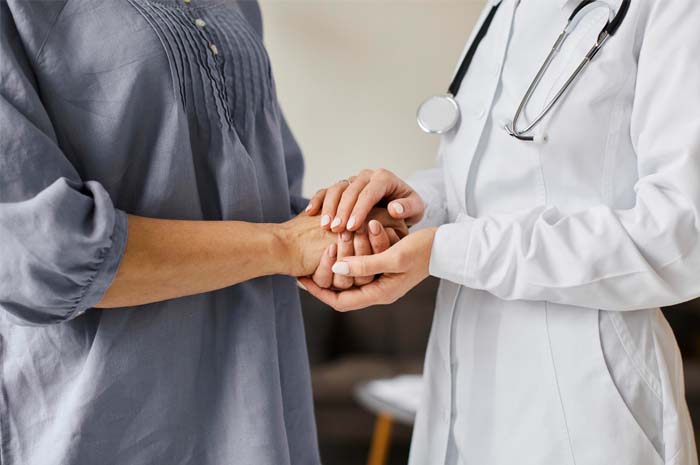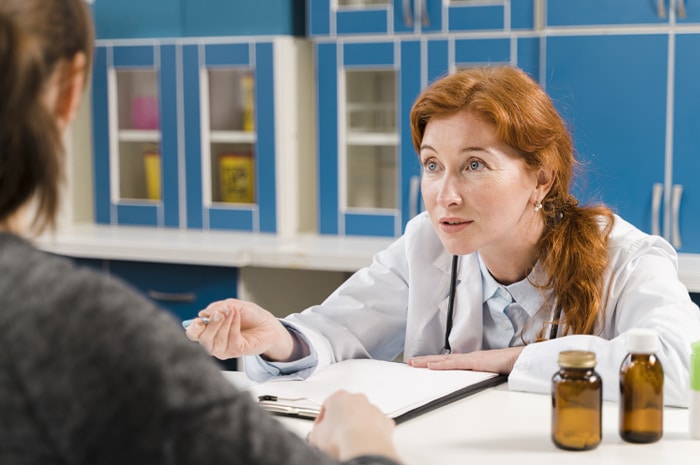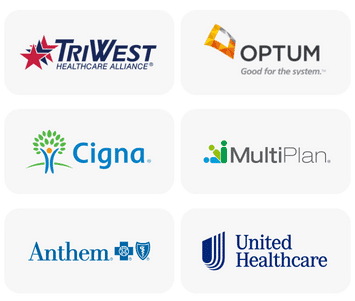Opioid Addiction Treatment

What Are Opioids?
One of the most confusing terms in addiction recovery is “opioid.” It refers to a large class of drugs, including prescription medications and illegal street drugs. Opioids can be divided into three categories:
- Natural – derived from the opium poppy plant
- Semi-synthetic – modified natural opioids
- Synthetic – man-made
Are Opiates and Opioids the Same Things?
The terms “opioid” and “opiate” are related but have different meanings. “Opioid” is the more inclusive and modern term. It refers to a class of drugs that includes natural, synthetic, and semi-synthetic substances that act on the body’s opioid receptors.
“Opiate” is a more specific term that refers only to natural compounds found in the opium poppy plant. It does not include synthetic or semi-synthetic opioids. Opiates include substances like morphine and codeine, which are extracted from the opium poppy plant.
Why Are Opioids So Addictive?
Opioids work by binding to opioid receptors: specific receptors in the brain and spinal cord. This binding reduces the perception of pain and can cause feelings of relaxation and euphoria. This profound sense of pleasure and relief from physical and emotional pain can lead to a strong desire to repeat the experience.
With repeated use of opioids, the body can develop a tolerance to their effects. This means that over time, you need higher doses to achieve the same level of pain relief or euphoria. Tolerance can drive you to increase your opioid use, increasing the risk of substance abuse.
What Makes Opioids Dangerous?
- Overdose:An opioid overdose is a life-threatening emergency. It includes symptoms like slow or irregular breathing, blue lips or fingertips, and loss of consciousness.
- Physical health problems:Opioid abuse can lead to health issues like infections at injection sites, respiratory problems, and organ damage.
- Mental health issues:Co-occurring substance abuse and mental health problems may get worse because of opioid addiction.
- Risk of infectious diseases:Sharing needles or engaging in risky behaviors can increase your risk of infectious diseases.
Another aspect of opioids that makes them so dangerous is that prescription opioids are intended for legitimate medical reasons. They are prescribed by doctors to help with pain, usually following surgery or an accident. They are meant to provide temporary relief, but this prescription can sometimes serve as a gateway to illicit opioid use. If you can no longer get prescription opioids, you may turn to illegal sources, such as heroin, which can be even more potent and dangerous.
How to Know If You’re Addicted to Opioids
The simplest signs that you have a problem with opioids are that you need them to function in life and that you need more to achieve the desired effects.
Recognizing when someone you care about is under the influence of opioids can be challenging, but many people do experience physical, mental, and behavioral effects from opioid drugs.
Here are some of the most common physical signs someone is using opioids:
- Drowsiness
- Slurred speech
- Constricted pupils
- Poor hygiene
- Changes in weight
- Constipation
- Needle marks
There are also usually behavioral signs that someone is using opioids. Some of them include:
- Neglecting obligations like work, school, or family
- Mood swings
- Isolation from friends and family
- Acting secretive
- Financial problems
- Cravings for opioids
What Is Opioid Detox Like?
Opioid detox is the first step in the recovery process. It will happen whenever you stop using opioids, but the safest way to do it is under the care and guidance of professional addiction treatment counselors like at Footprints to Recovery. That’s because opioid withdrawal is uncomfortable and can be dangerous, including symptoms like:
- Intense cravings for opioids
- Nausea and vomiting
- Sweating
- Anxiety
- Depression
- Flu-like symptoms
- Severe aches and pains
How long do withdrawal symptoms last? For prescription opioids, the last ones fade in 5 to 10 days. Heroin withdrawal symptoms generally go away after a week, although some symptoms may linger for months.
Opioid Addiction Treatment Options
Several evidence-based therapies and approachescan help people overcome opioid addiction. These therapies are often used as part of a comprehensive treatment plan tailored to your specific needs and preferences. At Footprints to Recovery we use the latest evidence-based and holistic treatment options to help our clients overcome a physical dependence on opioid medication.
Our opioid treatment programs use therapies such as:
- Cognitive behavioral therapy (CBT):CBT helps you identify and change negative thought patterns and behaviors associated with drug use. In the context of opioid use disorder treatment, CBT can help you develop coping skills and strategies to prevent relapse.
- Motivational enhancement therapy (MET):MET is a client-centered approach that aims to enhance your motivation to change and engage in treatment. It helps you explore your reasons for change and set achievable goals.
- Contingency management (CM):CM is a behavioral therapy that provides incentives or rewards for positive behaviors, such as remaining drug-free and attending treatment sessions. It’s often used to reinforce abstinence.
- Individual therapy:This provides a one-on-one therapeutic relationship between you and a trained therapist. You get personalized support and guidance as you explore what causes your opioid addiction. In this non-judgmental space, you can express your fears, concerns, and successes on the recovery journey.
- Group therapy:In group therapy people with opioid dependence come together in a setting facilitated by a trained therapist. Group therapy offers a sense of belonging and a supportive community of people going through similar experiences. Group members share strategies, insights, and tips for managing cravings, triggers, and sobriety. Witnessing other people’s progress and successes can motivate you.
- Family therapy:Family therapy brings you and your family or loved ones together to address the dynamics, communication patterns, and issues within your family that contribute to or influence your opioid addiction. Opioid addiction often affects family dynamics. This can lead to strained relationships, codependency, and enabling behaviors. Family therapy addresses these dynamics. It helps family members recognize enabling behaviors and develop healthier ways of supporting you in recovery.
It also aims for improved communication by helping family members express their needs, concerns, and emotions in constructive ways.

Medication-Assisted Treatment (MAT)
Medications are often used during opioid detox to help ease withdrawal symptoms and reduce cravings. Your clinical team may prescribe one in medical detox if they see it as necessary.
Common medications for opioid addiction include:
- Methadone:A long-acting opioid agonist that can reduce cravings and withdrawal symptoms
- Buprenorphine:A partial opioid agonist that can reduce cravings and withdrawal symptoms while having a lower risk of misuse
- Naloxone:An opioid receptor antagonist that blocks the effects of opioids and reduces cravings
Alternatives to Opioids for Pain Management
Opioid use disorders often develop due to chronic pain. The powerful pain relievers offer comfort and relief, but that relief can come at the cost of addiction. Footprints to Recovery offers holistic treatment programs that can help manage chronic pain without the use of opioid medication.
Some of the holistic pain management options at Footprints to Recovery include:
- Physical therapy:Physical therapists can develop exercise programs and techniques to help manage and reduce pain, improve mobility, and promote well-being.
- Massage therapy:Massage can provide relief from certain types of pain and improve relaxation.
- Chiropractic care:Chiropractic adjustments may help with musculoskeletal pain and discomfort.
- Acupuncture:Acupuncture has been used to manage chronic pain.
- Exercise and physical activity:Engaging in regular physical activity, as recommended by a healthcare provider, can improve your health and reduce chronic pain.
- Behavioral pain management:Learning pain-coping skills, relaxation techniques, and stress management can benefit chronic pain.
Self-Assessment: Am I Addicted?
" *" indicates required fields
Opioid Addiction Treatment at Footprints to Recovery
Opioid rehab at Footprints to Recovery is comprehensive, meaning you can enter at any stage of recovery and find exactly the care you need. Many people start with detox, then enter residential treatment, and step down from there.
Our levels of care for opioid use disorder treatment include:
Medical detox: Medical detox helps you safely remove all alcohol and drugs from your body. The process is overseen by a team of medical professionals who keep you comfortable. They help manage opioid withdrawal symptoms, possibly with medications for opioid addiction, and prepare you for the next stages of recovery.
Inpatient treatment: Inpatient substance abuse treatment or residential rehabilitation is designed for people with severe addiction or addiction relapses, mental illnesses, or co-occurring disorders. It combines holistic programs with the therapy techniques that are most likely to result in long-term recovery.
Partial hospitalization program (PHP): In partial hospitalization you’ll spend half your time in treatment and the other half living at home. It’s a step down in care from inpatient rehab and involves the greatest time commitment while still allowing you to go home each night. There are six hours of programming per day for five days a week.
Intensive outpatient program (IOP): Our IOP is more intensive than basic outpatient care, but it’s a step down from a PHP. It includes the same amount of programming per day as a basic outpatient program but is held on three to five days each week. It’s often recommended for people with more severe addictions, but not those who need intense care, like you would get in residential treatment or a PHP.
Outpatient treatment: Our lowest level of care is basic outpatient addiction treatment. It involves three hours of programming on one or two days per week. Programming includes individual, family, and group therapy. You choose between a day and evening schedule. This program is a good fit for those with work, school, or family responsibilities, or as a step down from higher levels of care.
What Happens When You Get to Footprints to Recovery for Opioid Addiction Treatment?
Most people who come to our treatment facility need to detox. When you check into a medical detox program, you can expect the steps below. If you’ve already detoxed and are entering a lower level of care, like outpatient, you’ll do Step 1 and then skip to Step 9, where you treatment team will help decide on the level of care that’s right for you.
- Assessment:Healthcare professionals will assess your physical and psychological health, how severe your addiction is, and any co-occurring medical or mental health conditions.
- Medical supervision:Opioid detox is conducted under medical supervision to ensure your safety and comfort. Medical professionals can provide medications and manage withdrawal symptoms.
- Tapering:Tapering involves reducing the dose of opioids over time to reduce withdrawal symptoms. This approach is often used for people on maintenance medications like methadone or buprenorphine.
- Supportive care:Supportive care for withdrawal can include hydration; nutrition; rest; and over-the-counter or prescription medications to address specific symptoms like nausea, diarrhea, or anxiety.
- Psychological support:Many opioid detox programs offer psychological support in the form of counseling. This helps you address the emotional aspects of addiction and develop coping strategies.
- Duration:Detox can last anywhere from a few days to a couple weeks. The length of time varies depending on several factors, including the type and amount of opioids used, your health, and your response to treatment.
- Withdrawal symptoms:Withdrawal symptoms during opioid detox can be uncomfortable and may include nausea, vomiting, diarrhea, sweating, muscle aches, anxiety, restlessness, and insomnia. The severity and duration of these symptoms can vary.
- Safety measures:Medical professionals will check your vital signs, including blood pressure, heart rate, and breathing to ensure you are safe. Emergency medical intervention may be necessary if complications arise.
- Transition to treatment:Opioid detox is not a standalone treatment for addiction but a crucial first step. After detox you’ll be encouraged to continue addiction treatment, which may include outpatient or residential programs, counseling, therapy, and support groups.
How Long Does Recovery from Opioid Abuse Take?
How long withdrawal symptoms last depends on the type of opioid you’re addicted to. For prescription opioids, the last symptoms fade in 5 to 10 days. For heroin, they generally fade after a week. However, some symptoms may linger for months.
Recovery is different than withdrawal. Recovery means learning to stay sober, and it’s a lifelong process. Staying sober and avoiding relapse in the face of new life challenges and temptations can be more difficult than detoxing was. That’s why after you’ve finished professional treatment for opioid addiction, it’s important to continue going to alumni meetings, 12-step programs, or other support programs.
What Happens When You Leave Footprints to Recovery?
We have two programs available to support treatment program alumni:
- Sober living and recovery homes: These independent living residences are designed especially for our alumni. They provide sober, structured, and supportive environments to help you readjust to life in the community. You can live in a sober living residence during outpatient opioid treatment.
- Alumni community: Our alumni groups offer opportunities to connect with other alumni of our programs in fun, community-fostering ways. They also provide safe places to process new challenges that come up in your recovery journey.
Does Footprints to Recovery Accept Insurance?
We understand paying for treatment is a concern. Footprints to Recovery accepts most major insurances. We work directly with your carrier, making things simpler and less stressful for you. Verifying your insurance with us allows us to begin that process long before you arrive.
Don’t be a number in the opioid crisis. Contact Footprints to Recovery today and learn how you can end prescription drug abuse once and for all. Our healthcare team has helped countless others overcome substance use disorders and we’re ready to help you! Opioid addiction is a deadly, difficult habit to break. Don’t risk one more day addicted.
Questions about treatment options?
Our admissions team is available 24/7 to listen to your story and help you get started with the next steps.


